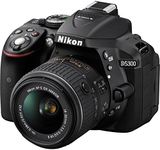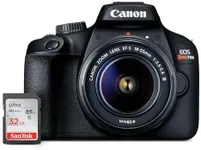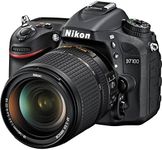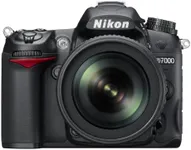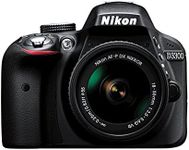Buying Guide for the Best Slr Cameras
Choosing the right SLR (Single-Lens Reflex) camera can be a daunting task, especially with the wide range of options available. The key to making the right choice is understanding your needs and how different specifications can meet those needs. Whether you are a beginner, an enthusiast, or a professional, knowing what to look for in an SLR camera will help you make an informed decision. Here are some key specifications to consider when selecting an SLR camera and how to navigate them.Sensor SizeThe sensor size in an SLR camera determines the quality of the images and the camera's performance in low light. Larger sensors, such as full-frame sensors, capture more light and detail, making them ideal for professional photography and low-light conditions. APS-C sensors are smaller but still offer excellent image quality and are more affordable, making them suitable for enthusiasts and beginners. Consider what you will be photographing and in what conditions to decide on the sensor size that best fits your needs.
MegapixelsMegapixels refer to the resolution of the camera's sensor, indicating how many millions of pixels the camera can capture. Higher megapixels mean more detail in your images, which is important for large prints and cropping. However, for most users, anything above 16 megapixels is sufficient for high-quality prints and online sharing. If you plan to do a lot of cropping or large-scale printing, look for cameras with higher megapixel counts.
ISO RangeISO range measures the camera's sensitivity to light. A wider ISO range allows for better performance in various lighting conditions, especially low light. Cameras with higher ISO capabilities can capture clear images in dim environments without needing a flash. If you often shoot in low-light situations, such as indoor events or night photography, a camera with a high ISO range will be beneficial.
Autofocus SystemThe autofocus system determines how quickly and accurately the camera can focus on a subject. More autofocus points and advanced tracking systems are beneficial for capturing fast-moving subjects, such as in sports or wildlife photography. For general photography, a basic autofocus system with fewer points may suffice. Consider the type of photography you will be doing to choose the right autofocus system.
Frame RateFrame rate, measured in frames per second (fps), indicates how many images the camera can capture in a second. Higher frame rates are essential for action photography, where capturing multiple shots in quick succession is crucial. For everyday photography, a lower frame rate is usually adequate. If you plan to shoot sports, wildlife, or other fast-paced activities, look for a camera with a higher frame rate.
Build Quality and Weather SealingBuild quality and weather sealing are important for durability and protection against the elements. Cameras with robust build quality and weather sealing can withstand harsh conditions, making them suitable for outdoor and adventure photography. If you often shoot in challenging environments, such as rain, dust, or extreme temperatures, prioritize cameras with these features.
Lens CompatibilityLens compatibility is crucial as it determines the range of lenses you can use with your camera. Different brands have different lens mounts, so ensure the camera you choose is compatible with the lenses you need. If you already own lenses, consider a camera that fits those lenses. For beginners, starting with a camera that has a wide range of affordable lenses available is a good idea.
Video CapabilitiesIf you plan to shoot videos, consider the camera's video capabilities. Look for features like 4K resolution, frame rates, and video-specific settings. Some cameras offer advanced video features like external microphone inputs and headphone jacks for better audio quality. Decide how important video is to you and choose a camera that meets your video recording needs.
User Interface and ControlsThe user interface and controls affect how easy the camera is to use. Cameras with intuitive menus, customizable buttons, and touchscreens can enhance your shooting experience. If you are a beginner, look for a camera with a user-friendly interface. More advanced users might prefer cameras with more manual controls and customization options.
Battery LifeBattery life is important, especially if you plan to shoot for extended periods without access to charging. Cameras with longer battery life allow you to shoot more without worrying about running out of power. Consider how often and how long you will be shooting to determine the battery life you need. Carrying spare batteries can also be a good solution for longer shoots.
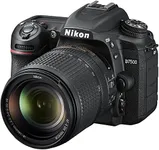
![Canon DSLR Camera [EOS 90D] with Bu](https://images-proxy.bestreviews.guide/kFEi5KP2PYJ3wMXMQ_Zv7U27skM=/0x150/https://m.media-amazon.com/images/I/41CT8Bz8kQL._AC_CX679_.jpg)



